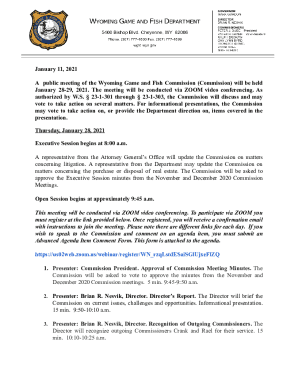Rising Grocery Prices: Inflationary Pressures Continue To Squeeze Household Budgets

Table of Contents
Understanding the Drivers Behind Rising Grocery Prices
Several interconnected factors contribute to the current surge in grocery prices. Understanding these drivers is crucial to addressing the problem effectively.
Global Supply Chain Disruptions
The global food system is incredibly complex, and recent disruptions have had a significant impact on food availability and affordability. The COVID-19 pandemic exposed vulnerabilities in global supply chains, causing widespread delays and shortages. Geopolitical instability, particularly the war in Ukraine, has further exacerbated the situation, impacting the supply of key agricultural commodities like wheat and sunflower oil. Simultaneously, extreme weather events, including droughts and floods, have reduced crop yields in various regions. These combined factors have led to significant increases in global food prices.
- Increased transportation costs: Fuel prices have risen dramatically, increasing the cost of shipping food products across the globe.
- Port congestion: Delays at ports have further constrained the flow of goods, leading to shortages and higher prices.
- Reduced crop yields: Extreme weather events have negatively impacted agricultural production, reducing the overall supply of food.
- Fertilizer shortages: The war in Ukraine has disrupted the supply of fertilizers, essential for crop production, leading to higher production costs. These supply chain issues are a major contributor to food inflation and the increase in global food prices.
Increased Energy Costs
Energy is a fundamental input in the entire food production and distribution system. From powering farming equipment to running processing plants and refrigerating transported goods, higher energy prices directly translate to higher food prices.
- Fuel costs for farming equipment: Farmers rely heavily on machinery, and increased fuel costs significantly increase their operational expenses.
- Electricity for processing plants: Food processing requires substantial energy, and higher electricity prices increase the cost of processed foods.
- Refrigerated transportation: Maintaining the cold chain for perishable goods is essential, and rising energy prices make this more expensive. The impact of energy prices on food production and transportation is a significant driver of inflation.
Labor Shortages and Rising Wages
Labor shortages in the agricultural and food processing sectors are also contributing to rising grocery prices. Businesses are forced to increase wages to attract and retain workers, which, in turn, increases the cost of producing and distributing food.
- Increased wages to attract and retain workers: Competition for workers is fierce, driving up wages across the food industry.
- Higher labor costs passed on to consumers: Businesses pass these increased labor costs on to consumers in the form of higher prices. This wage inflation, combined with worker shortages, is putting upward pressure on grocery prices.
The Impact on Household Budgets and Food Insecurity
The rise in grocery prices has a profound impact on household budgets and is exacerbating food insecurity for many.
Shifting Consumer Spending Habits
Consumers are responding to higher prices by adjusting their shopping habits. This often means sacrificing quality or quantity to stay within budget.
- Switching to cheaper brands: Consumers are increasingly opting for cheaper store brands over name brands.
- Reducing meat consumption: Meat is often a more expensive protein source, leading many to reduce their meat intake.
- Buying less fresh produce: Fresh fruits and vegetables can be expensive, leading to reduced consumption.
- Increased reliance on pantry staples: Consumers are turning to more affordable, shelf-stable items like rice, pasta, and beans. These budget cuts reflect the strain rising grocery prices are placing on household finances.
Increased Food Insecurity
The increased cost of groceries is directly linked to rising food insecurity, particularly among vulnerable populations. Many families are struggling to afford enough nutritious food.
- Statistics on food insecurity rates: Organizations like Feeding America track food insecurity rates, which are often correlated with food prices.
- Impact on children and elderly: Children and the elderly are especially vulnerable to food insecurity.
- Increased reliance on food banks: More families are relying on food banks and other charitable organizations to meet their food needs. Affordable groceries are becoming increasingly unattainable for many vulnerable populations.
Strategies for Managing Rising Grocery Costs
While the problem of rising grocery prices is systemic, there are strategies individuals can employ to mitigate the impact on their household budgets.
Budgeting and Meal Planning
Careful budgeting and meal planning are essential for managing grocery expenses effectively.
- Using grocery apps to track spending: Apps can help monitor spending and identify areas for improvement.
- Creating a weekly meal plan: Planning meals in advance helps reduce food waste and ensures efficient grocery shopping.
- Utilizing coupons and discounts: Taking advantage of coupons, sales, and loyalty programs can significantly reduce grocery bills. Grocery budgeting and effective meal planning are crucial in navigating the rising costs.
Smart Shopping Techniques
Employing smart shopping techniques can help stretch your grocery budget further.
- Shopping at discount stores: Discount grocery stores and warehouse clubs can offer significant savings.
- Comparing unit prices: Comparing unit prices helps identify the best value for your money.
- Buying in bulk when appropriate: Buying in bulk can be cost-effective for non-perishable items.
- Utilizing loyalty programs: Loyalty programs often offer discounts and special offers. These grocery shopping tips can help you save money and find the best deals.
Conclusion: Navigating the Challenge of Rising Grocery Prices
Rising grocery prices, driven by global supply chain disruptions, increased energy costs, and labor shortages, are significantly impacting household budgets and exacerbating food insecurity. Understanding these factors is the first step towards managing the challenge. By implementing smart shopping techniques, creating a grocery budget, and adopting effective meal planning strategies, individuals can mitigate the effects of these inflationary pressures. Don't let rising grocery prices overwhelm your budget. Take control by implementing the strategies outlined in this article and learn how to navigate these inflationary pressures effectively. Start planning your grocery budget today!

Featured Posts
-
 Thousands Of Zebra Mussels Discovered On Boat Lift In Casper
May 22, 2025
Thousands Of Zebra Mussels Discovered On Boat Lift In Casper
May 22, 2025 -
 Wtt Star Contender Chennai 2025 Kamals Farewell Match Against Suravajjula
May 22, 2025
Wtt Star Contender Chennai 2025 Kamals Farewell Match Against Suravajjula
May 22, 2025 -
 Wyoming House Bill Returns Otter Management To Game And Fish
May 22, 2025
Wyoming House Bill Returns Otter Management To Game And Fish
May 22, 2025 -
 Prediksi Juara Liga Inggris 2024 2025 Peran Strategi Pelatih Liverpool
May 22, 2025
Prediksi Juara Liga Inggris 2024 2025 Peran Strategi Pelatih Liverpool
May 22, 2025 -
 Core Weave Crwv Stock Surge Understanding Thursdays Jump
May 22, 2025
Core Weave Crwv Stock Surge Understanding Thursdays Jump
May 22, 2025
Latest Posts
-
 Route 581 Shutdown Box Truck Accident Investigation
May 22, 2025
Route 581 Shutdown Box Truck Accident Investigation
May 22, 2025 -
 Fed Ex Truck Blaze Closes Portion Of Route 283 Lancaster County
May 22, 2025
Fed Ex Truck Blaze Closes Portion Of Route 283 Lancaster County
May 22, 2025 -
 Lancaster County Fed Ex Truck Catches Fire On Route 283
May 22, 2025
Lancaster County Fed Ex Truck Catches Fire On Route 283
May 22, 2025 -
 Tractor Trailer Carrying Produce Overturns On I 83
May 22, 2025
Tractor Trailer Carrying Produce Overturns On I 83
May 22, 2025 -
 Route 283 Fed Ex Truck Fire Lancaster County Incident
May 22, 2025
Route 283 Fed Ex Truck Fire Lancaster County Incident
May 22, 2025
